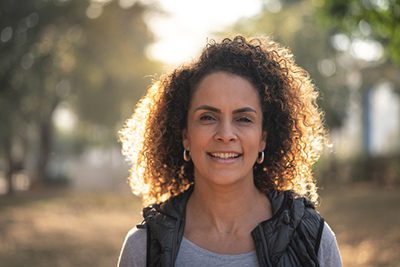
This editor's note is from the July/August 2019 issue of Massage & Bodywork magazine. Read the full issue here.
“Mary” is female, in her 40s, has a master’s degree, and she and her spouse make more than $75,000 annually combined. Chances are Mary is a bodywork client.
Last issue (May/June 2019, page 64), we revealed the first results from our most recent ABMP National Massage Consumer Survey, conducted by Harstad Strategic Research. There, we chatted about the 18 percent of US adults who annually receive massage (now a consistent number four years running), the openness of past massage recipients to getting more massage, and the never-received-a-massage-before public who is open to receiving massage. And, unsurprisingly, we also noted that people most often don’t receive a massage because of cost.
This issue, on page 84, you’ll see some stats on key massage consumer subgroups of women. For example, 47 percent of all US women have received a massage in their life (versus 41 percent of all men). More education equals more chances our hypothetical Mary is getting on your massage table. (Of women who have a postgraduate degree, 70 percent have received a massage compared to 58 percent of those with a bachelor’s degree compared to 41 percent with some college education compared to 28 percent with a high school diploma or less). Also, more household income equals more chances she’s getting a massage. (Of women who live in a household that earns more than $75,000 annually, 72 percent have received a massage compared to 55 percent who earn between $40,000 and $75,000 compared to 35 percent who earn under $40,000.)
A couple more subgroups worth mentioning: urban women are more likely to have received a massage (58 percent) compared to suburban women (45 percent) compared to rural women (39 percent). And western and northeastern women are more likely to have received a massage (59 percent) compared to midwestern and southern women (40 percent).
So, what does it all mean? As a massage therapist, you have two primary paths to grow your practice: (1) retain your current clients and encourage them to increase the frequency of their visits and (2) get new clients.
This is where Mary comes in.
Let’s make some inferences based on what we know about Mary. She has an income that allows her to receive massage. We don’t know exactly how many massages Mary receives per year (the average receiver of massages gets 2.1 per year), but we can surmise that there is potential to receive more than one.
Do you remind Mary to schedule her next appointment before she leaves your practice? Do you send out openings in your schedule via social media or eblasts to your clientele? Do you offer a frequent massage punch card for loyal clients or for new clients you believe are interested in frequent sessions?
Regarding new clients, do you offer Mary a referral program, where she receives a discount for bringing in her friends? If we can surmise that Mary has some disposable income, what about encouraging her to purchase massage as a gift for others?
In our survey, about 12 percent of adults who have received a massage expressed a serious likelihood of giving a massage gift this year; but, you guessed it, that number is 23 percent of women aged 21–49, and 21 percent for people with a household income greater than $50,000.
We know that when people receive massage, they enjoy massage. And when they enjoy massage, they tell other people about massage. Is homing in on the Marys of the world a way to push that needle past the 18 percent threshold we’ve been stuck on for years? Perhaps Mary is a conduit to your success and the profession’s.
Of course, Mary is only an example of a client likely to receive massage. We hope all women and all men are able and willing to receive massage for its vast array of benefits—treating injury, reducing stress, or experiencing therapeutic touch.
We’ll continue to discuss aspects of ABMP’s National Massage Consumer Survey in each issue of Massage & Bodywork magazine the remainder of the year, breaking out one specific trend or facet we found interesting and opening it up for discussion.
And until then, we hope you enjoy this magazine issue on a broad array of topics we believe will pique your interest and improve your practice.
Darren Buford, Editor-in-Chief